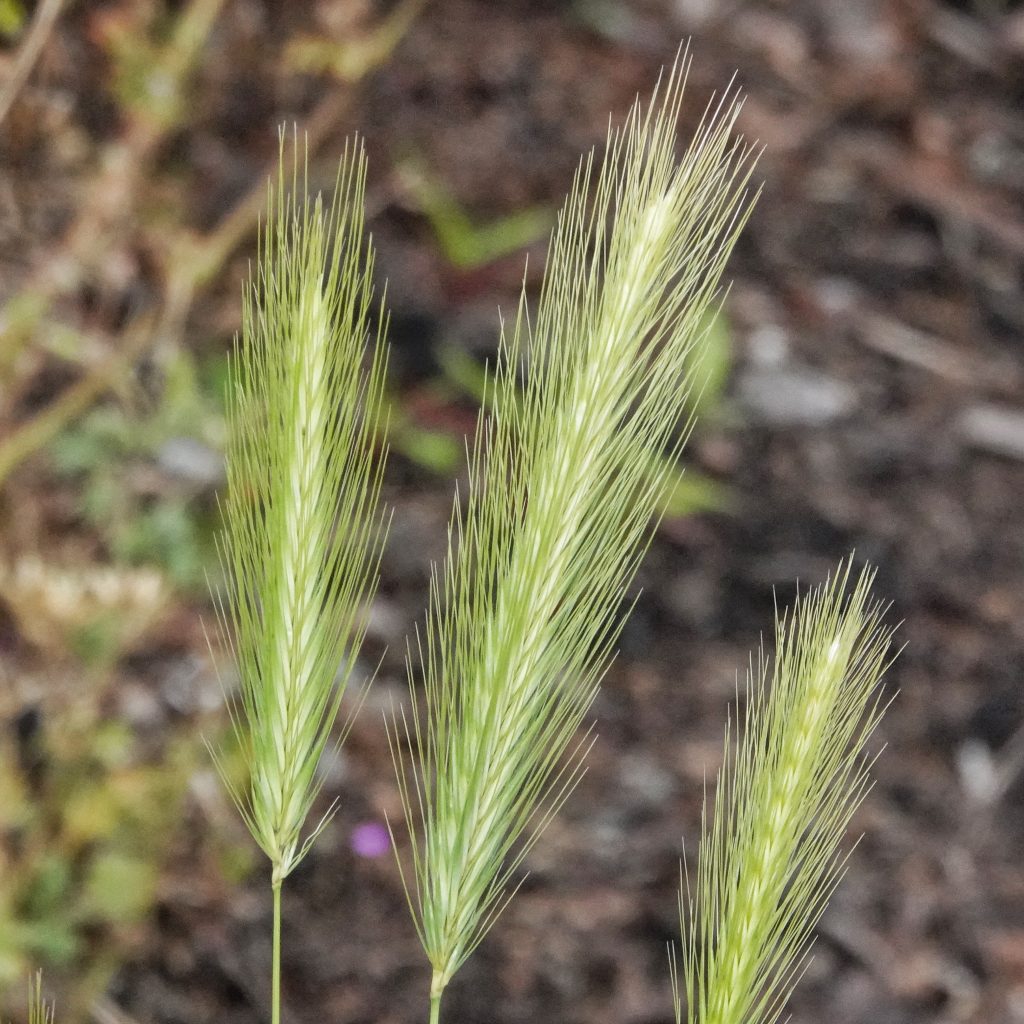
I’m sure many parents and hikers, and especially pet owners, are not fond of this species (which goes by a variety of common names, including mouse barley, wall barley, wild barley, false barley, farmer’s foxtail, bulbous barley, way barley, smooth barley, hare barley, way bentgrass, and foxtail), due to the grabby nature of its awns, though one has to admit that they are a particularly effective way to transport its seeds from one location to another. It is really a rather beautiful grass, and a field of it in even a slight breeze is a sight to behold. My wife, Pam, was so struck by its beauty that I went to an area of particular abundance (the one pictured in these photos), and pulled a clump of it, which she subsequently planted in a pot on our porch.
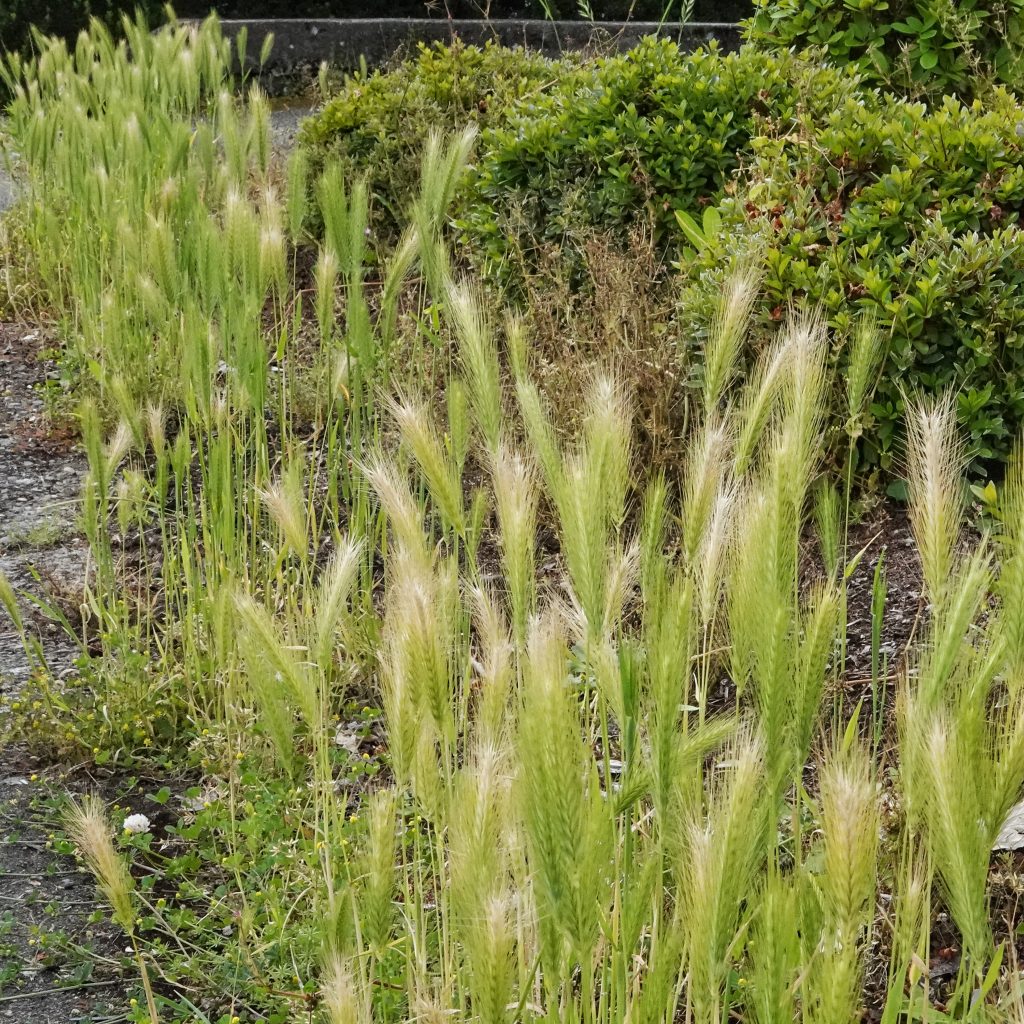
This is a common, weedy grass in our neighborhood in Vancouver, Washington, and on a recent walk I finally decided to try to identify it, and grabbed a few stalks to take home. It turned out to be an easy identification, because I had heard it called barley before so I knew where to start (or at least I started in the right place, since I didn’t actually realize at the time how many other genera also have long bristled heads, and Cindy Roché [one of the authors of the grass bible for our region ‘Field Guide to the Grasses of Oregon and Washington’] had confirmed my identification before I found out). The most salient feature, the auricles (ear-like projections from the base of the leaf), were readily visible and obviously over 1mm long. That ruled out all of the Hordeum spp. except H. vulgare, and the relative shortness of the awns ruled out that one.
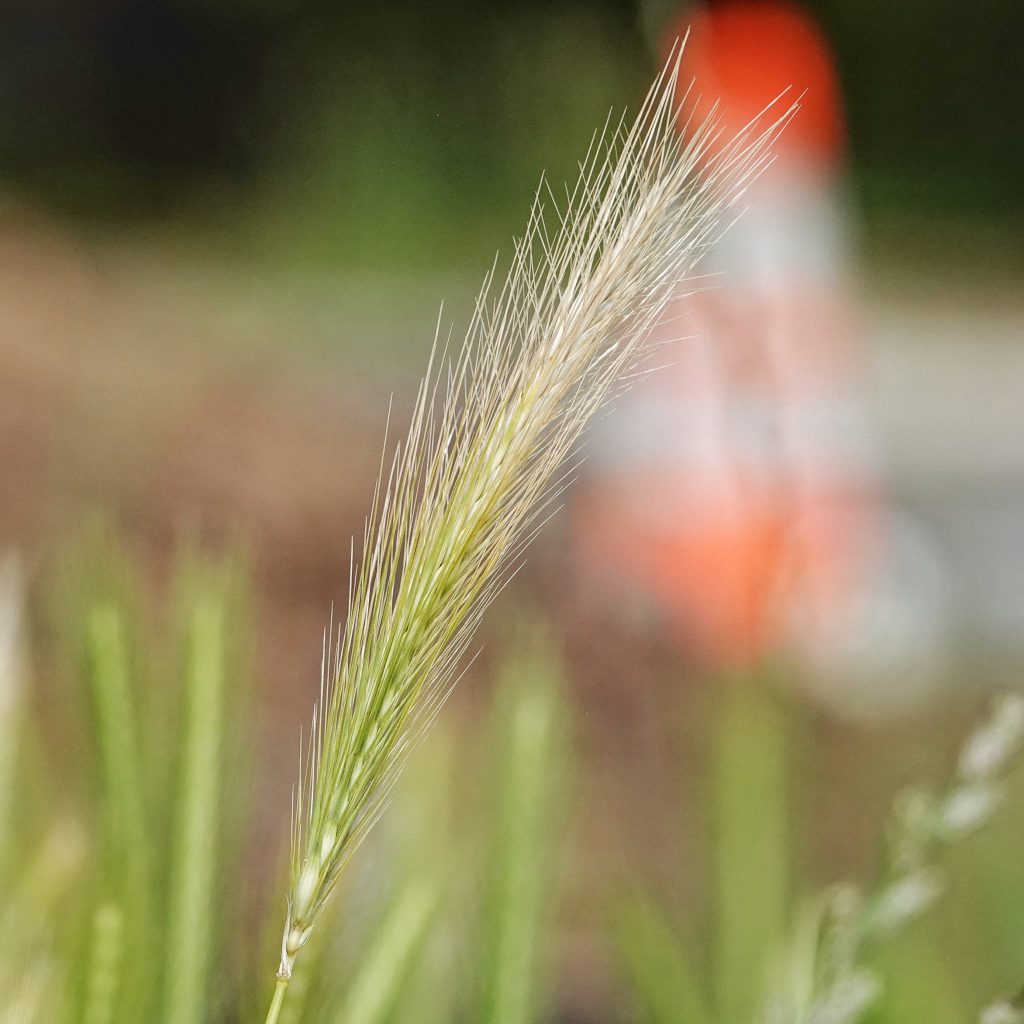
Considered to be a weed in row crop fields, it is actually a very effective forage crop for grazers, especially in areas of little rainfall, and it was imported to this country for that purpose. However the awns can cause damage and infection to the eyes, noses, ears, and throats of pets and grazers, both wild and domestic, and for this reason, in planned agricultural settings, it is usually kept well grazed, or even mowed, to prevent it from forming seedheads. It is also said that even goats won’t eat it once it has set seeds. Some herbalists use a decoction of the whole plant as a diuretic, and to treat bladder problems. Some cultures roast and grind the seeds into a flour for making bread and hot cereals, though it is not a grain of choice.
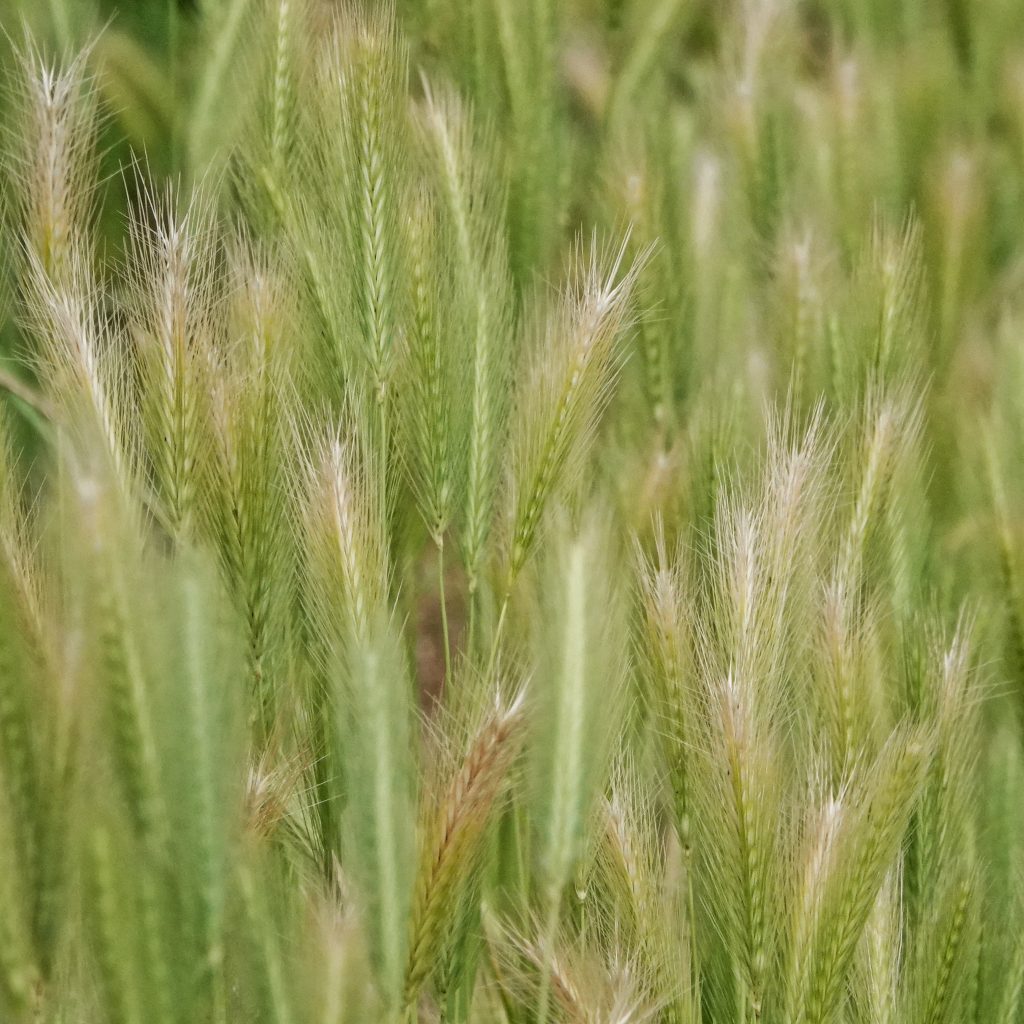
Description-(a concise grass glossary can be found here) Annual; may be up to 44” tall; seedheads are up to 3.5” long, tufted, with very long (up to 1.5”), stout awns that are modified glumes; 3 spikelets per node; central lemma <2mm wide; leaf blades usually <7mm wide, with well developed auricles (2-7mm long); lateral spikelets on pedicels.
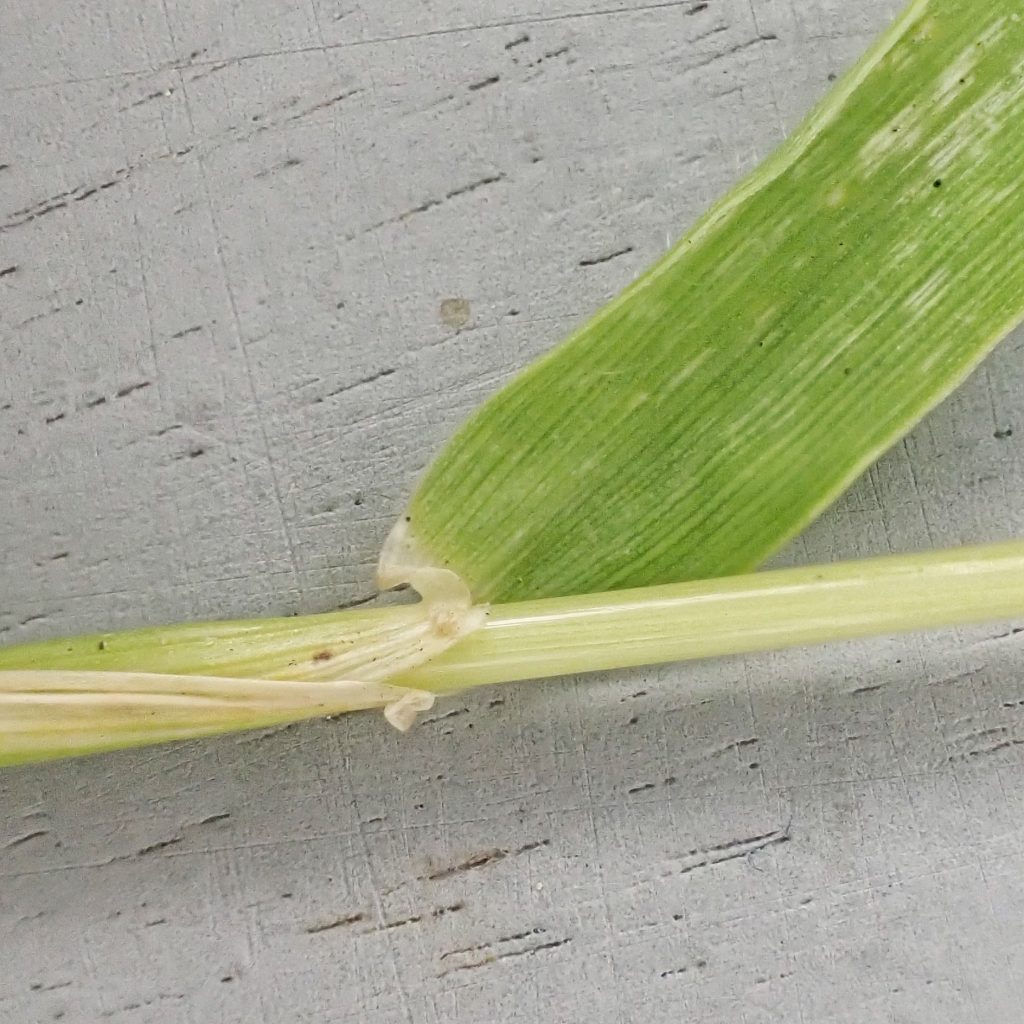
Similar species–Hordeum vulgare has lemma >3mm wide, leaf blades >5mm wide, and awns usually more than 1.5” long; other Hordeum sp. lack or have undeveloped (<1mm long) auricles; bristly ryegrasses (Elymus sp.) are perennial and have lateral spikelets sessile; Secale cereale has only 1 spikelet per node; Setaria sp. have bristles arising from the spikelet pedicels, rather than awns that are modified glumes.
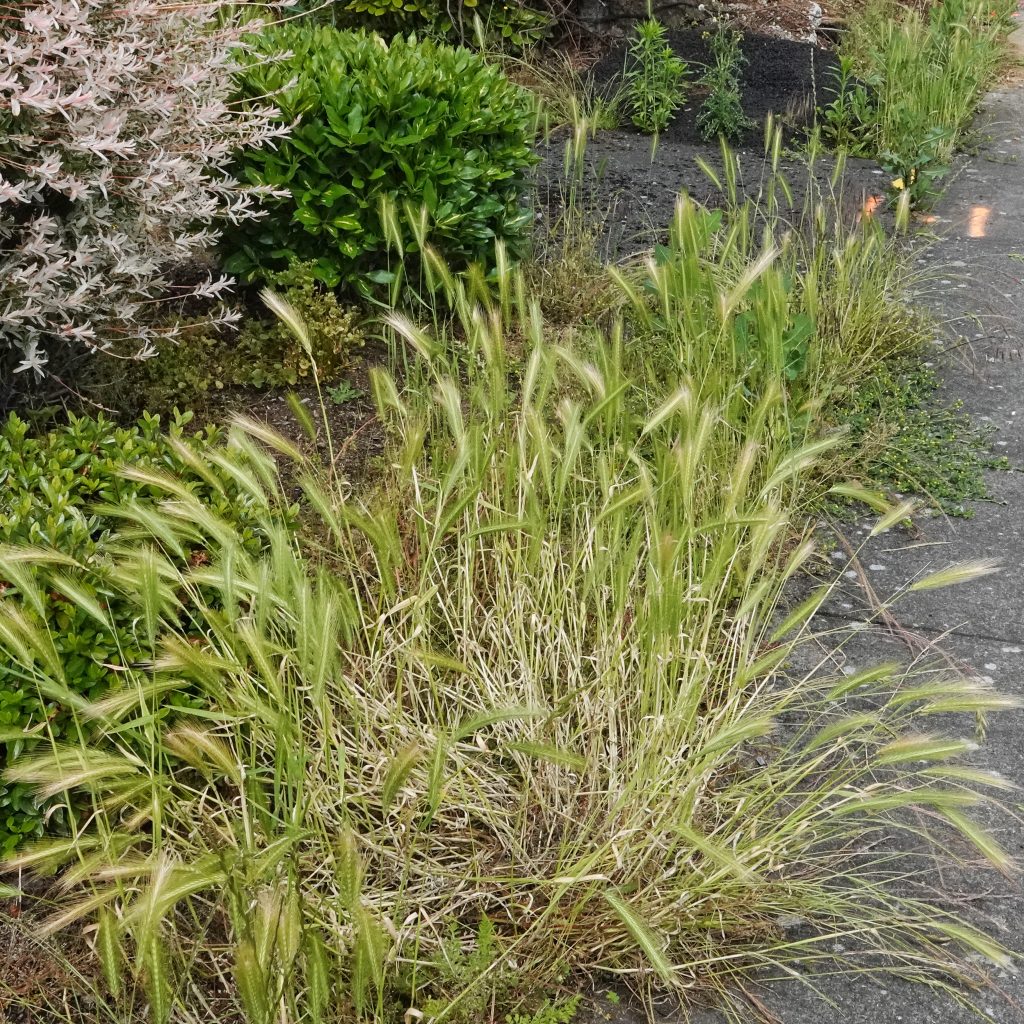
Habitat-Disturbed ground, pastures, fallow fields; considered to be ruderal, which means it is a first colonizer of disturbed ground.
Range-Native to Europe, North Africa, Western Asia; Naturalized throughout North America; found more or less region wide in disturbed ground.
Reproductive timing-Flowers May through July; germinates in the fall and establishes vegetative growth in winter and early spring.
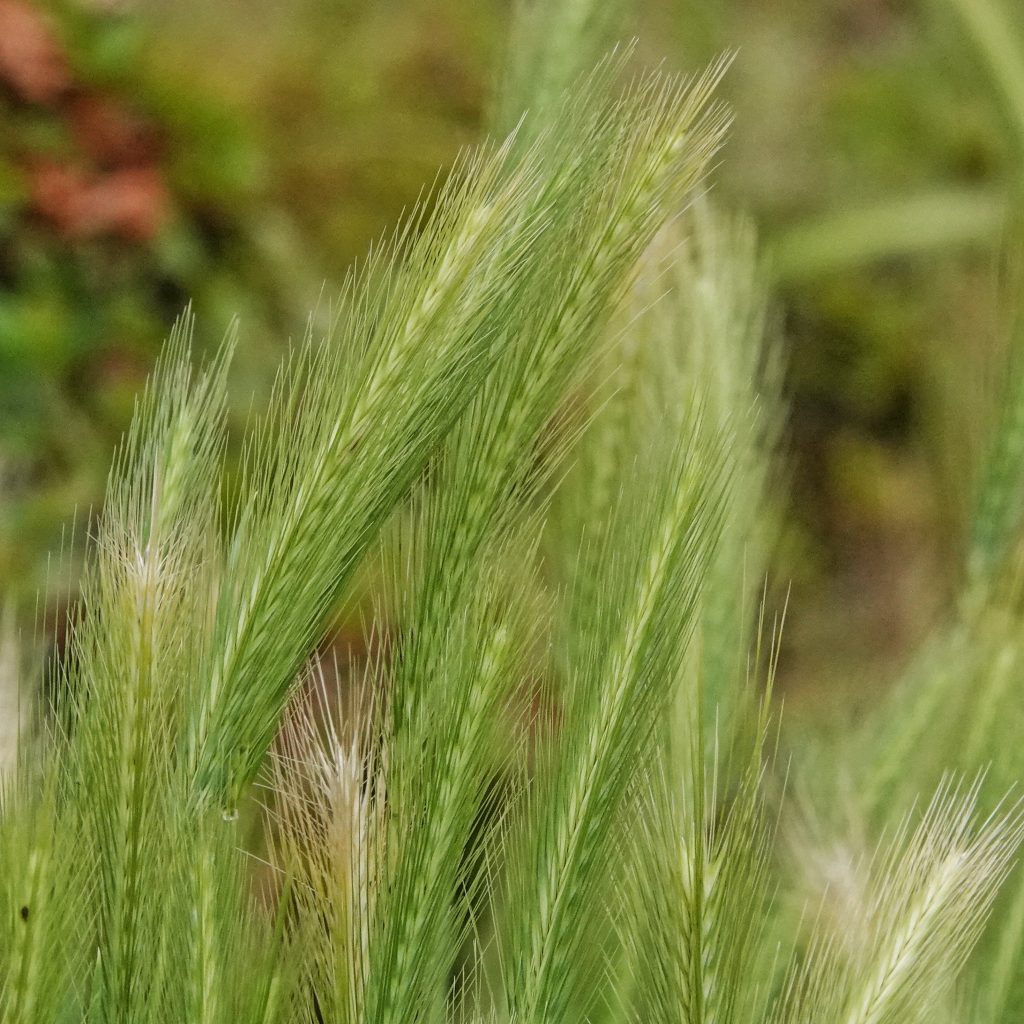
Eaten by-Some stinkbugs in the tribe Aeliini, and larvae of flea beetles in the genus Chaetocnema, are known to feed on the roots; larvae of flies in the genera Cerodontha, Phytomyza, and Agromyza mine its leaves; some birds and insects eat the seeds once they’ve been separated from the awns; small mammals eat the seeds by clipping off the stem, and then clipping off the awns; many grazing animals eat the vegetative parts, but tend to avoid the plant once seed has been set.
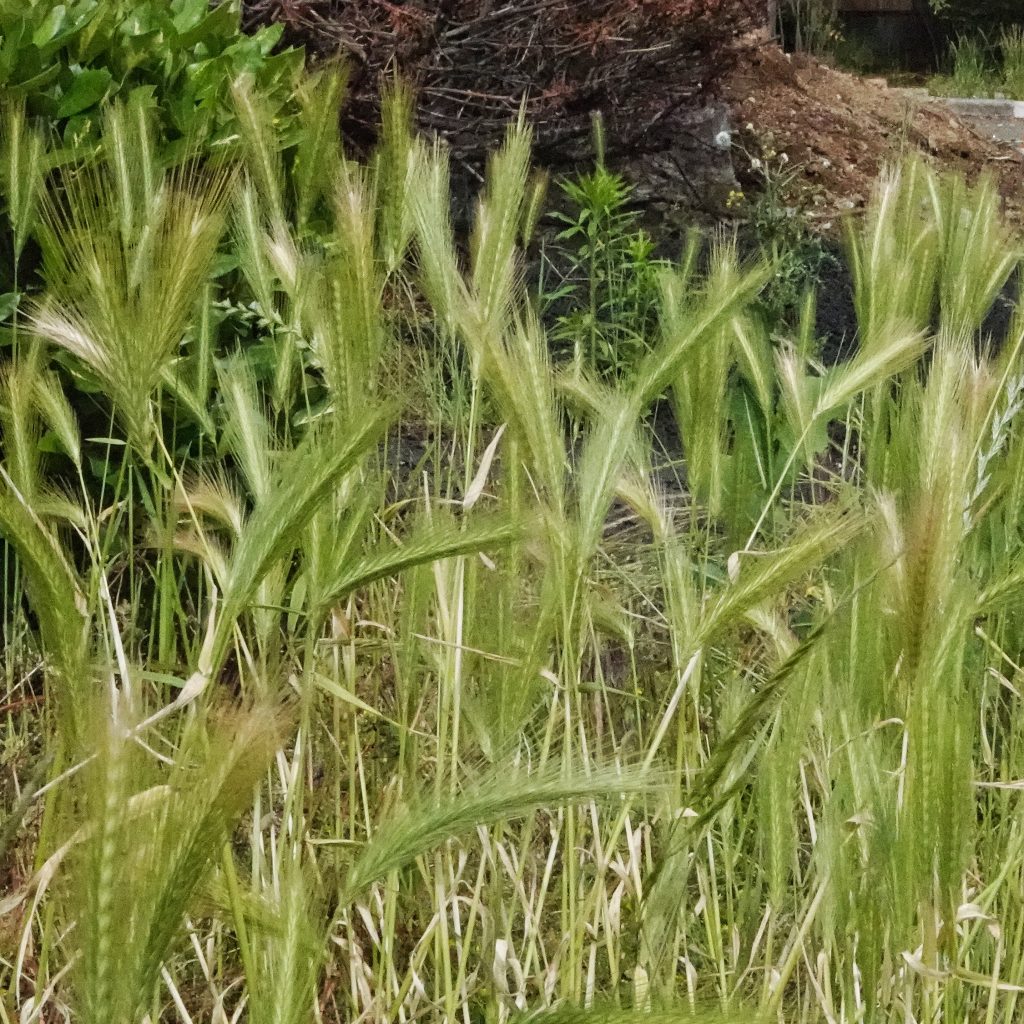
Etymology of names–Hordeum is the Latin word for barley, which comes from their word for ‘bristly’. The specific epithet murinum appears to be a combination of the Latin word for ‘mice’, presumably because mice were often in the granaries, and their word for ‘wall’. I cannot be certain what ‘wall’ may reference, but it may be because it is tetraploid, which creates a sort of wall that doesnt allow it to hybridize without other Hordeum sp. Mouse barley and wall barley are both common common names for this species.
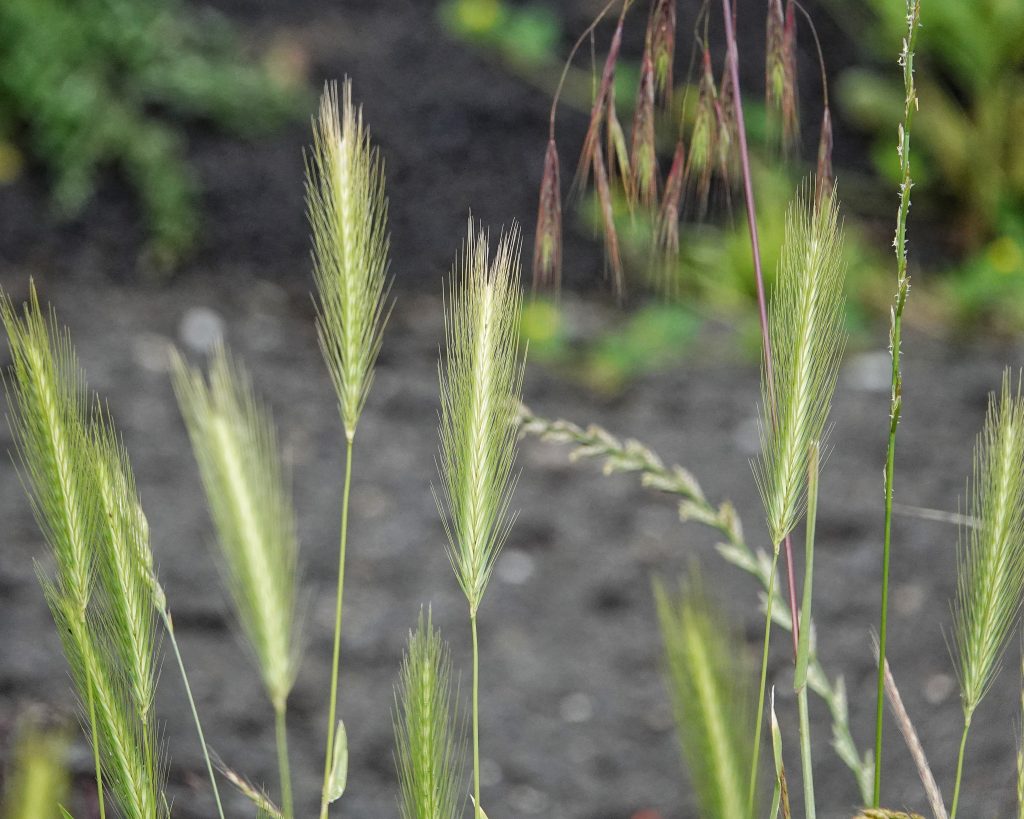
https://wiki.bugwood.org/Hordeum_murinum_ssp._leporinum
http://biology.burke.washington.edu/herbarium/imagecollection/taxon.php?Taxon=Hordeum%20murinum
https://www.healthbenefitstimes.com/false-barley/amp/
https://fieldguide.mt.gov/speciesDetail.aspx?elcode=PMPOA380A0
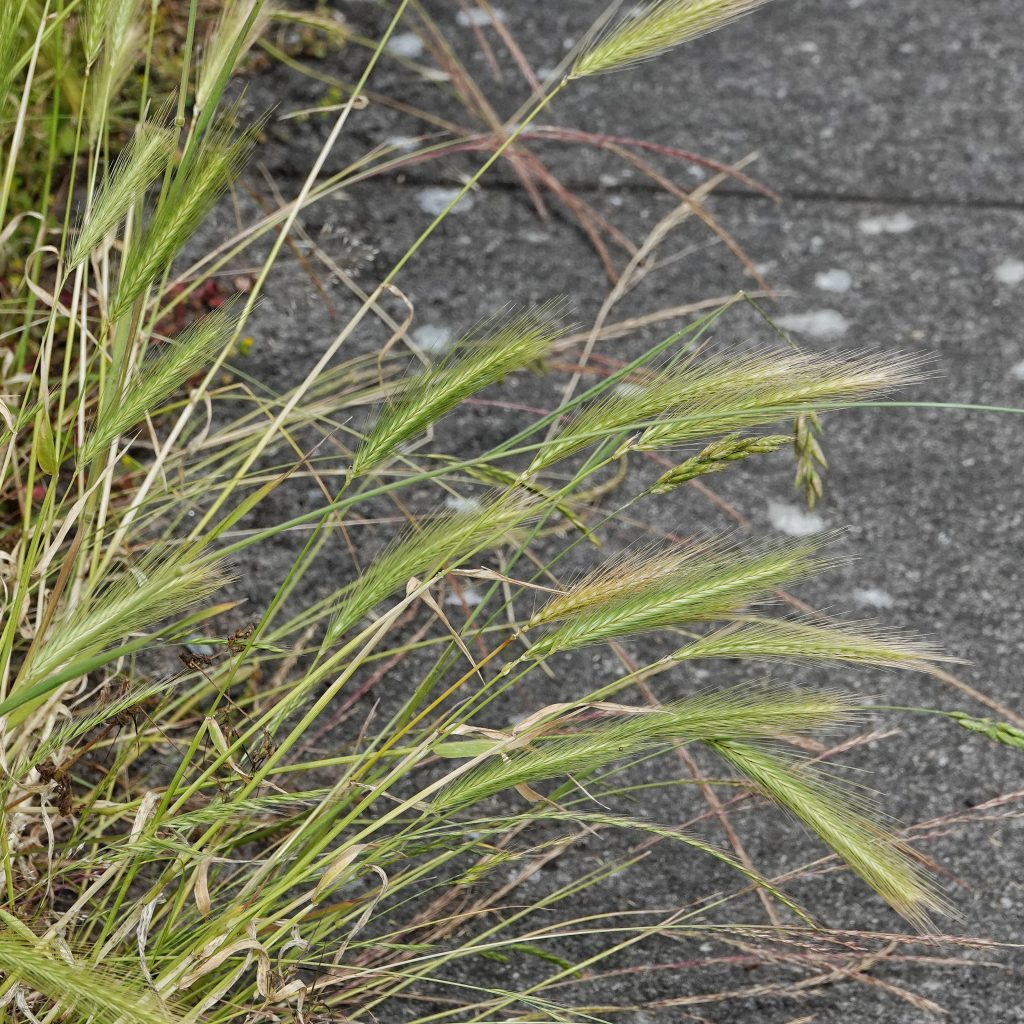
So. Your recent posts are KILLING me.
Plants n critters are so familiar I can SMELL the NW way out here on the prairie.
Thanks, Dan
Always happy to encourage your return!
My pasture of dairy goats will confirm the unpleasantness of this as forage. My dogs will confirm his much they hate going to the vet when these have worked their way deep into the skin. My feet will confirm the very nastiness of these drilling through jeans, boots, and socks while working in the field or hiking after work.
Given the choice, I’d keep ticks and smite this off the planet.
A recent Great British Gardens showed an estate where they carefully hand-sowed something like a thousand of these, started them in the greenhouse, potted them up as needed, and then eventually placed into a border. I about died.
Yep, it can be pretty problematic! Thanks for sharing your trials with it, Kat!
I am currently in urgent care because I breathed in a (seed? single frond?) of one of these & it’s stuck in my throat. I’d collected them to dry and use in floral arrangements because they were so pretty, and I had no idea they’d fall apart & latch on. Just have to laugh about it. This is such a lovely article, it was so pleasant to see you’d even pointed out the kind of beatles I saw while bundling them. There’s a lot plants have to teach us, my lesson today is that they’re not all to be taken lightly.
Hope they can help you out, Gwen!